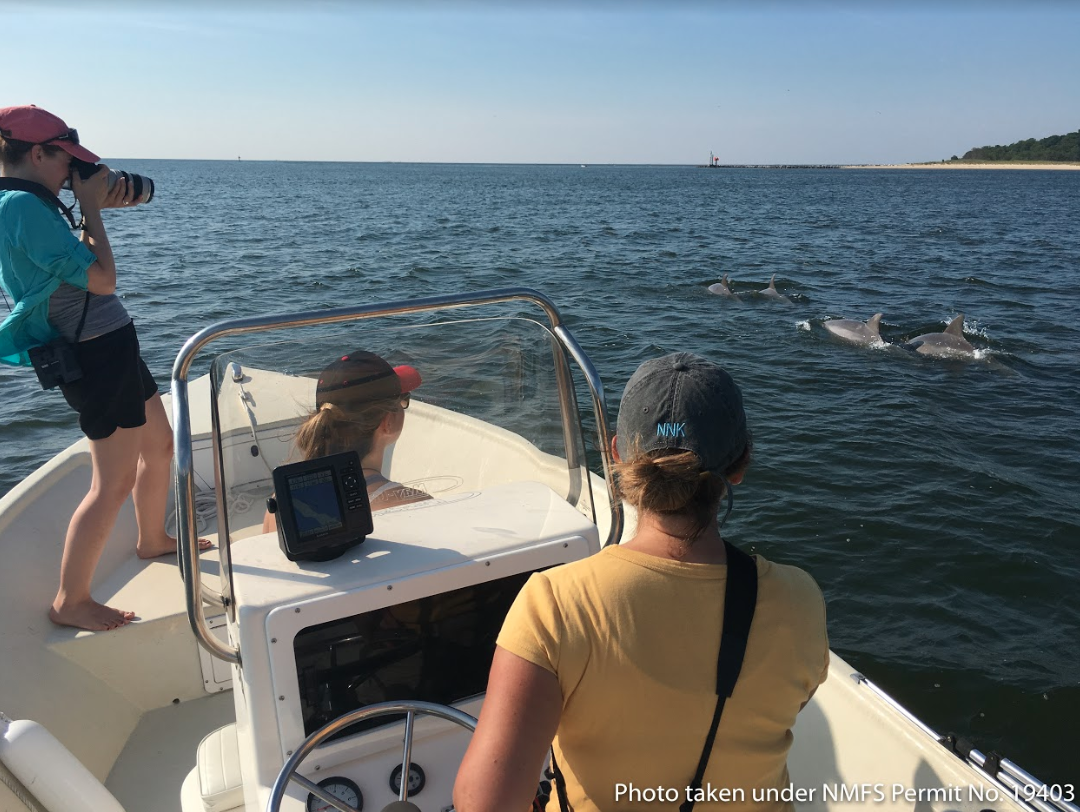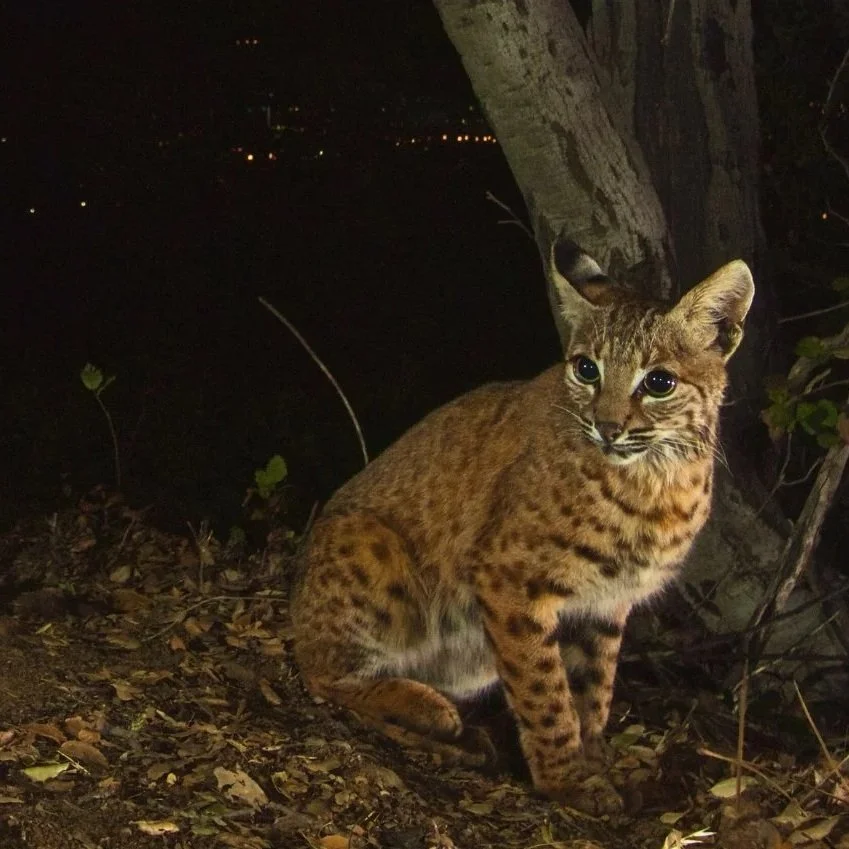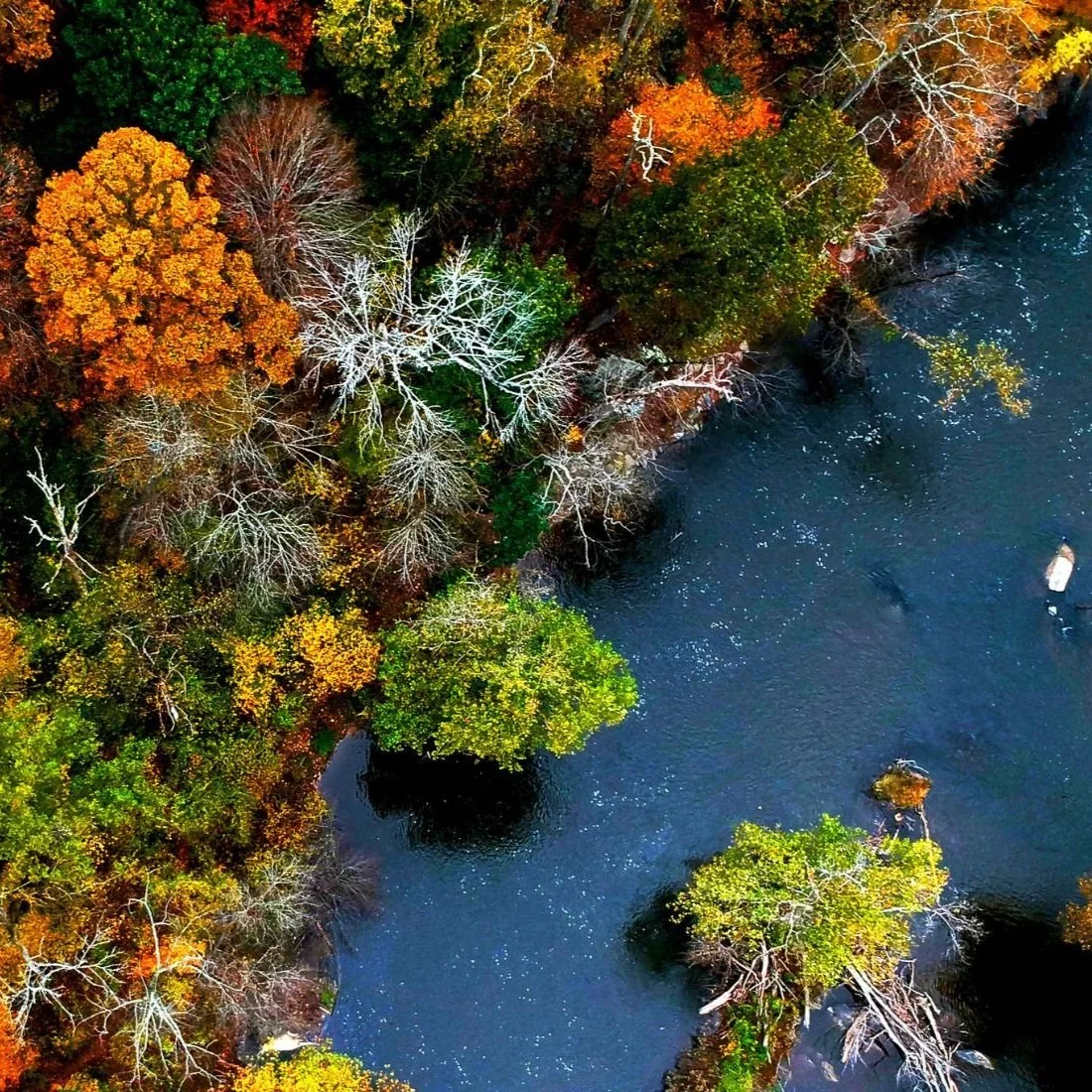Ask the Expert: What do we know about the Dolphins in the Potomac River?
/Get to know these charismatic creatures of the Potomac and Chesapeake Bay
Dr. Janet Mann, DIRECTOR of the PCDP, TRAcks a pod of dolphins in the lower Potomac. Photo Courtesy of the Potomac-Chesapeake Dolphin Project. (TAKEN UNDER NMFS PERMIT #19403)
Many people know that Michelle Obama and Eleanor Holmes Norton are DC area residents, but did you know they’re also… dolphins in the Potomac River?
That’s right, there are bottlenose dolphins that call the Potomac River their summer home and the researchers of the Potomac-Chesapeake Dolphin Project (PCDP) have named many of them after historical and political figures.
Dolphin sightings have been reported in the Potomac region for ages—one report from the 1880s describes seeing these intelligent creatures as far north as Alexandria. Yet, there’s still so much we don’t know about our local dolphin population. What draws them to the Potomac? Why don’t they swim as far north as they once did? How many return to our region every year? What threatens their survival?
Discover what we know about about this mysterious marine mammal from the expert herself, Ann-Marie Jacoby, the Assistant Director of PCDP. Let's dive in!
DOLPHINS 101
Q. What species of dolphins are found in the Potomac and Chesapeake Bay?
The species of dolphin found in the Potomac River and Chesapeake Bay is the common bottlenose dolphin (Tursiops truncatus).
Q. How far north in the river have the dolphins been spotted?
The Potomac-Chesapeake Dolphin Project (PCDP) has received reports from residents, fishers, and boaters of dolphin sightings as far north as the 301 Harry Nice Memorial Bridge near Dahlgren, VA.
Q. When are the dolphins in our area?
PCDP researchers, including myself and Director Dr. Janet Mann, have seen dolphins in the Potomac-Chesapeake area between the months of April and September. During July and August, when water temperatures peak, dolphins are abundant and groups sometimes number in the hundreds. In December 2015, local residents reported dolphins in the Potomac River, a first.
Q. Do you have a sense of how many dolphins live here during that time?
Using photographs of the dolphins’ dorsal fins, we have identified over 800 individuals. However, given the infancy of the project (initiated in 2015), thousands are likely to frequent the region.
FlIPPING OUT! Photo Courtesy of the Potomac-Chesapeake Dolphin Project.
THE RESEARCH
Q. What are you currently researching?
Dr. Janet Mann and I are focused on critical baseline questions, such as how many dolphins come into the river? Do the same individuals return each year? When and why are coming here? Where do the Potomac River – Chesapeake Bay dolphins spend the winter?
Q. What are your most surprising/exciting findings to date?
One of the most exciting findings to date is the large number of dolphins that frequent the Potomac River and how many of these animals return year after year. So far, over 100 individuals come back to the area during the breeding season, suggesting that the Potomac has critical habitat and food resources. Newborn calves, with their distinct fetal lines (0-3 months old) are a common sight, suggesting that the shallow, warm, protected waters are a good calving area.
We were also surprised to find that dolphins are moving halfway up the Potomac River, only 70 miles from Washington, D.C. Historical records from the 1800s document dolphins near Washington, D.C.. If water quality continues to improve, dolphins might continue to expand their range up river.
Q. What’s next for your research?
I am particularly interested in better understanding which dolphin populations use the Potomac-Chesapeake area to improve their management. By using photographs of their dorsal fins and comparing them to photographs taken at other research sites along the mid-Atlantic coast, we have found that dolphins sighted in the Potomac-Chesapeake area are also sighted in waters from New Jersey to North Carolina.
I am also interested in better understanding the seasonality, distribution, and recency of dolphins in the Potomac River. I plan to use acoustic devices that detect dolphins as well as conduct interviews with recreational and commercial fishers and boaters to learn more about how far up the Potomac dolphins are seen, when during the year they are seen, and whether dolphin presence in the Potomac is a recent phenomenon.
Ann-MaRIE JACOBY AND HER FELLOW RESEARCHERS PHOTOGRAPH DOLPHIN DORSAL FINS FOR IDENTIFICATION. Photo Courtesy of the Potomac-Chesapeake Dolphin Project.
HOW YOU CAN GET INVOLVED
Q. If someone spots a dolphin, what should they do?
If someone spots a dolphin, they should report their sightings to the Potomac-Chesapeake Dolphin Project via email (pcdolphinproject@gmail.com) or use the Chesapeake Dolphin Watch app.
You should also follow the observations guidelines established by Marine Mammal Protection Act as to avoid harming the dolphins. A principle tenant of these guidelines is to remain 50 yards away from dolphins. If you can get a good photograph of their dorsal fins, we might be able to identify it for you!
Q. What can people do to help the dolphins?
To help the dolphins, Potomac River, and Chesapeake Bay, people can take small steps that cumulatively make a difference. It is not unusual for me and my team to pick up plastic bags, plastic bottles, cans, and balloons among other pieces of trash while out on the water. By properly disposing of or avoiding the use of single use plastics or other unsustainable materials, people can prevent trash getting into the ocean and polluting the dolphins’ environment.
Additionally, people can avoid using substances containing chemicals that are toxic to the environment. These chemicals, whether household cleaning products or shampoo, can enter the Chesapeake watershed through storm-water runoff. High concentrations of these and toxins from agricultural runoff can result in harmful algal blooms that make the environment uninhabitable, killing dolphin prey and displacing dolphins. Unfortunately, algal blooms such as these are not uncommon for the Bay area. This past July, we saw an algal bloom; the water close to shore was red, dead fish floated at the surface, and dolphins were not sighted in these waters. Because dolphins are at the top of the food chain, they accumulate toxins, which are stored mostly in their blubber. Females can offload these toxins in an unfortunate way, breast milk, thereby passing chemical cocktails onto their calves.
Q. Where can people learn more?
People can learn more about dolphins in the Potomac-Chesapeake area by visiting the Potomac-Chesapeake Dolphin Project’s website or by contacting us at pcdolphinproject@gmail.com.
You can also more from Dr. Janet Mann, Director of the PCDP, about dolphin and whale intelligence, culture, and even how they name themselves on the most recent episode of the Big Biology podcast!
MEET THE EXPERT: Ann-Marie Jacoby
Ann-Marie Jacoby is the Associate Director of the Potomac-Chesapeake Dolphin Project, a PhD student at Duke University, and a National Geographic Young Explorer. She is interested in better understanding which bottlenose dolphin populations use the Potomac-Chesapeake area, as well as their temporal and geographic distribution in the Potomac to develop more effective management. She considers outreach to be a critical component of conservation efforts and is therefore interested in informing and involving the public in research through citizen science and visual storytelling.
Get local wildlife and river news delivered to your inbox.
Sign up for our monthly River Update email.
100% Private. We don’t spam.


















